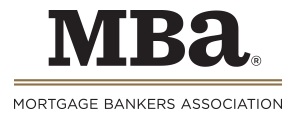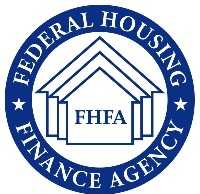WASHINGTON, D.C. – November 15, 2012 – (RealEstateRama) — The delinquency rate for mortgage loans on one-to-four-unit residential properties fell to a seasonally adjusted rate of 7.40 percent of all loans outstanding as of the end of the third quarter of 2012, a decrease of 18 basis points from the second quarter of 2012, and a decrease of 59 basis points from one year ago, according to the Mortgage Bankers Association’s (MBA) National Delinquency Survey. The non-seasonally adjusted delinquency rate increased 29 basis points to 7.64 percent this quarter from 7.35 percent last quarter. Delinquency rates typically increase between the second and third quarters of the year.
The delinquency rate includes loans that are at least one payment past due but does not include loans in the process of foreclosure. The percentage of loans on which foreclosure actions were started during the third quarter was 0.90 percent, down six basis points from last quarter and down 18 basis points from one year ago. The percentage of loans in the foreclosure process at the end of the third quarter was 4.07 percent, down 20 basis points from the second quarter and 36 basis points lower than one year ago. The serious delinquency rate, the percentage of loans that are 90 days or more past due or in the process of foreclosure, was 7.03 percent, a decrease of 28 basis points from last quarter, and a decrease of 86 basis points from the third quarter of last year.
The combined percentage of loans in foreclosure or at least one payment past due was 11.71 percent on a non-seasonally adjusted basis, a nine basis point increase from last quarter, but a 92 basis points decrease from the same quarter one year ago.
“Mortgage delinquencies decreased compared to last quarter overall, driven mainly by a decline in loans that are 90 days or more delinquent,” observed Mike Fratantoni, MBA’s Vice President of Research and Economics. “The 90 day delinquency rate is at its lowest level since 2008, and together with the decline in the percentage of loans in foreclosure, this indicates a significant drop in the shadow inventory of distressed loans-a real positive for the housing market. The 30 day delinquency rate increased slightly, but remains close to the long-term average for this metric. Given the weak economic and job growth in third quarter, it is not surprising that this metric has not improved. ”
“The improvement in total delinquency rates was accompanied by a further drop in the foreclosure starts rate, which hit its lowest level since 2007. Moreover, the foreclosure inventory rate decreased by 20 basis points over the quarter, the largest quarterly drop in the history of the survey. The level however, is still roughly four times the long-run average for this series as we continue to see back logs of loans in the foreclosure process in states with a judicial foreclosure system. The foreclosure rate for judicial states decreased slightly to 6.6 percent and the foreclosure rate for non-judicial states showed a steeper drop to 2.4 percent. The difference in the foreclosure rates of the two regimes is at its widest since we started tracking this metric in 2006. ”
“If states delay initiating the foreclosure process, the 90 day delinquency rate goes up as new foreclosures are not initiated and these loans are held in the 90 day delinquency category. If the foreclosure process itself is slowed, the inventory rate goes up as the foreclosure timeline is extended and more loans are being held in foreclosure. The rate of new foreclosures started changes when procedures change. The foreclosure rates in Maryland, Washington and New Jersey continue to be impacted by state efforts to slow the foreclosure process and by servicers who have to adjust their internal foreclosure processes based on state requirements. As a result, these states often fluctuate between large increases in foreclosure starts accompanied by large decreases in 90 day delinquencies in a single quarter, or large increases in 90 day delinquencies accompanied by large decreases in new foreclosures started. This quarter, Maryland and Washington saw large decreases in new foreclosures started after significant increases last quarter. New Jersey led the increases in foreclosures started across every loan type, while seeing almost equally large decreases in loans that were 90 days delinquent.”
“After large second quarter increases in the foreclosure starts and inventory rates for FHA loans due to the actions by some large servicers to re-start foreclosure processes that had been stalled, these rates fell in the third quarter but remain above where they were in the first quarter of 2012. The percent of loans in foreclosure for FHA loans decreased to 4.08 percent, and FHA foreclosure starts decreased to 1.12 percent after spiking to 1.53 percent the previous quarter. FHA loans that were 90 or more days past due fell this quarter to the lowest levels since 2008. Despite the decreases, these measures are still above historical averages. On the other hand, the total past due rate for FHA loans is now at its lowest level in over 10 years, and FHA’s post-2010 books are performing much better than loans originated prior to 2010.”
“In terms of the percentage of loans in foreclosure, Florida continues to lead the nation at 13.0 percent, more than three times the national average, followed by New Jersey at 8.9 percent, Illinois at 6.8 percent and New York at 6.5 percent. In contrast, California is at 2.6 percent and Arizona is at 2.5 percent, more than a full percentage point below the national average,” Fratantoni said.
Change from last quarter (second quarter of 2012)
On a seasonally adjusted basis, the overall delinquency rate decreased for all loan types except subprime ARM loans. The seasonally adjusted delinquency rate decreased 19 basis points to 4.05 percent for prime fixed loans and decreased 49 basis points to 8.70 percent for prime ARM loans. For subprime loans, the delinquency rate decreased 62 basis points to 19.23 percent for subprime fixed loans and increased 35 basis points to 22.95 percent for subprime ARM loans. The delinquency rate for VA loans fell by 31 basis points to 6.34 while the FHA delinquency rate declined by 75 basis points to 11.14.
The percent of loans in foreclosure, also known as the foreclosure inventory rate, decreased from last quarter to 4.07 percent. The foreclosure inventory rate for prime fixed loans decreased eight basis points to 2.34 percent and the rate for prime ARM loans decreased 49 basis points from last quarter to 7.82 percent. For subprime loans, the rate for subprime ARM loans decreased 182 basis points to 19.30 percent and the rate for subprime fixed loans decreased 79 basis points to 9.36. The foreclosure inventory rate for FHA loans decreased 15 basis points to 4.08 while the rate for VA loans decreased seven basis points to 2.21.
The non-seasonally adjusted foreclosure starts rate decreased eight basis points for prime ARM loans to 1.47 percent, seven basis points for subprime fixed to 1.91 percent and 41 basis points for FHA loans to 1.12 percent. The foreclosure starts rate increased one basis point for prime fixed loans to 0.54 percent, 20 basis points for subprime ARM loans to 3.40 percent and nine basis points for VA loans to 0.57 percent.
Change from last year (third quarter of 2011)
Compared with the third quarter of 2011, the foreclosure inventory rate decreased 22 basis points for prime fixed loans, 123 basis points for prime ARM loans, 146 basis points for subprime fixed, 343 basis points for subprime ARM loans, four basis points for VA loans but increased 81 basis points for FHA loans.
Over the past year, the non-seasonally adjusted foreclosure starts rate decreased 15 basis points for prime fixed loans, 69 basis points for prime ARM loans, 59 basis points for subprime fixed, 125 basis points for subprime ARM loans but increased 34 basis points for FHA loans and one basis point for VA loans.
If you are a member of the media and would like a copy of the full report, contact Matt Robinson at .
If you are not a member of the media and would like to purchase the survey, please visit www.mortgagebankers.org/NDS or e-mail .
© 2012 Mortgage Bankers Association (MBA). All rights reserved, except as explicitly granted.
Data are from a proprietary paid subscription service of MBA and are provided to the media as a courtesy, solely for use as background reference. No part of the data may be reproduced, stored in a retrieval system, transmitted or redistributed in any form or by any means, including electronic, mechanical, photocopying, recording or otherwise. Permission is granted to news media to reproduce limited data in text articles. Data may not be reproduced in tabular or graphical form without MBA’s prior written consent.
###
The above data were obtained in cooperation with the Mortgage Bankers Association (MBA), which produces the National Delinquency Survey (NDS). The NDS, which has been conducted since 1953, covers 41.8 million loans on one- to four- unit residential properties, representing approximately 88 percent of all “first-lien” residential mortgage loans outstanding in the United States. This quarter’s loan count saw a decrease of about 733,000 loans from the previous quarter, and decreased by 1,752,000 loans from one year ago. Loans surveyed were reported by approximately 120 lenders, including mortgage bankers, commercial banks, and thrifts.
###
The Mortgage Bankers Association (MBA) is the national association representing the real estate finance industry, an industry that employs more than 280,000 people in virtually every community in the country. Headquartered in Washington, D.C., the association works to ensure the continued strength of the nation’s residential and commercial real estate markets; to expand homeownership and extend access to affordable housing to all Americans. MBA promotes fair and ethical lending practices and fosters professional excellence among real estate finance employees through a wide range of educational programs and a variety of publications. Its membership of over 2,200 companies includes all elements of real estate finance: mortgage companies, mortgage brokers, commercial banks, thrifts, REITs, Wall Street conduits, life insurance companies and others in the mortgage lending field. For additional information, visit MBA’s Web site: www.mortgagebankers.org.
###
The Mortgage Bankers Association (MBA) is the national association representing the real estate finance industry, an industry that employs more than 280,000 people in virtually every community in the country. Headquartered in Washington, D.C., the association works to ensure the continued strength of the nation’s residential and commercial real estate markets; to expand homeownership and extend access to affordable housing to all Americans. MBA promotes fair and ethical lending practices and fosters professional excellence among real estate finance employees through a wide range of educational programs and a variety of publications. Its membership of over 2,200 companies includes all elements of real estate finance: mortgage companies, mortgage brokers, commercial banks, thrifts, Wall Street conduits, life insurance companies and others in the mortgage lending field. For additional information, visit MBA’s Web site: www.mortgagebankers.org.














